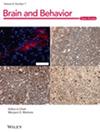Suppression of Deactivation of Working Memory and Promotion of Activation of Sustained Attention in the Default Mode Network Are Affected by Schizotypy in a Large Sample of Nonclinical Subjects
Abstract
Introduction
Schizotypy is a personality trait characterized by subclinical expression of the signs and symptoms of schizophrenia. Maladaptive schizotypy is given the clinical designation of schizotypal personality disorder. Previous studies have shown that functional disturbance of the default mode network (DMN) is associated with maladaptive schizotypy. Working memory impairment is a particularly common feature of maladaptive schizotypy and schizophrenia. As these characteristics can also be observed in the healthy population, our purpose was to identify the neural correlates of schizotypy during sustained attention tasks and working memory tasks in nonclinical subjects.
Methods
We recruited 409 healthy individuals (251 men and 158 women; 20.7 ± 1.8 [SD] years of age) and determined their schizotypy scores using the Schizotypal Personality Questionnaire. We used a typical functional MRI (fMRI) task under 0-back and 2-back conditions. Corrections for multiple comparisons were performed via the threshold-free cluster enhancement method with a familywise error-corrected threshold of p < 0.0167 (0.05/3) at the whole-brain level, including the cerebellum.
Results
Suppression of deactivation of the DMN (the medial prefrontal cortex (mPFC), the posterior cingulate cortex, the inferior parietal lobule, and the middle temporal gyrus) in the working memory (2-back > rest) task and promotion of activation during the sustained attention (0-back > rest) task were associated with schizotypy scores. Among the schizotypy subscores, cognitive–perceptual deficits were significantly related only to the left precuneus, the mPFC, and the superior temporal gyrus for the 2-back > 0-back contrast; to the left precuneus and the bilateral mPFC for the 2-back > rest contrast; and to the left superior temporal cortex and the right precuneus for the 0-back > rest contrast within the DMN.
Conclusion
Disturbance of the DMN is related to the degree of schizotypy, especially to the degree of cognitive‒perceptual deficits, even in nonclinical subjects.


 求助内容:
求助内容: 应助结果提醒方式:
应助结果提醒方式:


